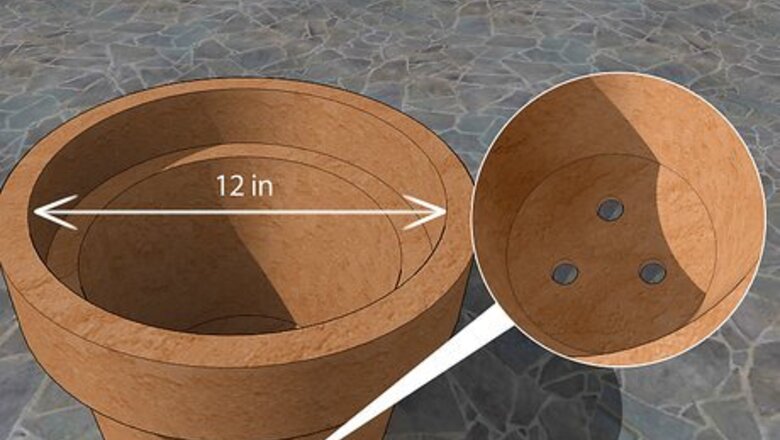
views
Planting the Herbs in Containers
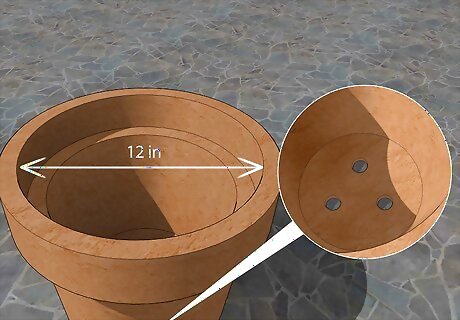
Purchase ceramic pots with drainage holes. Look for pots that are at least 12 inches (30 cm) in diameter if you want to fit multiple plants in the same container. Check the bottom of the pots to see if they have holes for water to drain out. Otherwise, use a drill to make 3-4 holes in the bottom. The size of the pot will limit the herb’s growth. For a single herb, use a pot that’s 4–6 in (10–15 cm) in diameter. A 12 in (30 cm) pot can typically accommodate 6 different plants depending on their mature size. If you have larger herbs, limit the amount to 3 or 4. Place pieces of broken pots, ceramic, or rocks over the holes so the soil doesn’t wash out when you water your plants.
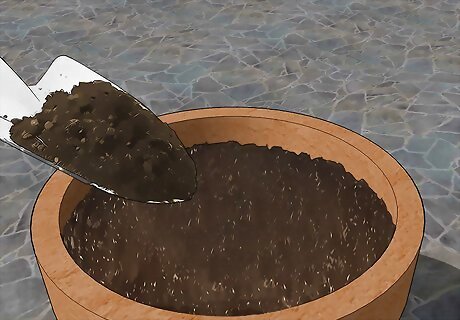
Fill the pot with potting mix so it’s 1 in (2.5 cm) below the edge. Use high-quality store-bought potting mix, or make a mixture of 3 parts potting soil, 1 part compost, and 1 part perlite or sand. Make sure the potting mixture drains well. You can also use earthworm castings or aged manure as a replacement for compost for the same effect. Avoid using soil from your garden when you plant your herbs. Garden soil is too dense, and it could also contain weeds or bacteria that may damage your plants. Top-dress the soil with compost for added nutrients.
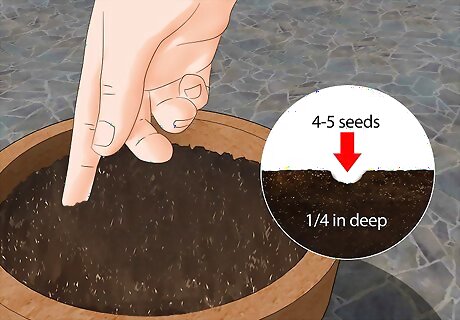
Plant the seeds ⁄4 inch (6.4 mm) deep in the soil. If you’re growing your herbs from seeds, make a hole ⁄4 inch (6.4 mm) deep for each type of herb you’re planting. Sprinkle 4-5 seeds of one herb into a hole before covering them again. Repeat this for each herb you plant. Pair herbs together that require similar amounts of water and sunlight throughout the day. This ensures your plants all survive. Look on the packaging for the seeds or plant to see what the sun and water requirements are. Sage, bay, thyme, and rosemary are common herbs to grow together in the same pot. Check if your herbs are perennials or annuals. Separate them into different pots. Common perennials are oregano, fennel, and mint. Some of the common annual herbs are basil, dill, and cilantro.
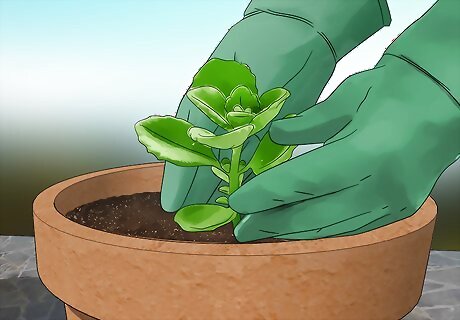
Transplant established herbs into a larger pot. Dig a hole the same size and depth of the root ball. Place the herb into the hole so the top of the root ball is even with the soil. Fill in any extra space with your potting mix and pat it so the soil contacts the root ball evenly. Place herbs strategically in the pot. Keep shorter creeping herbs near the edges, while taller bushier herbs should be kept in the back or middle of the pot. Label your individual herbs with popsicle sticks in the soil or garden labels.
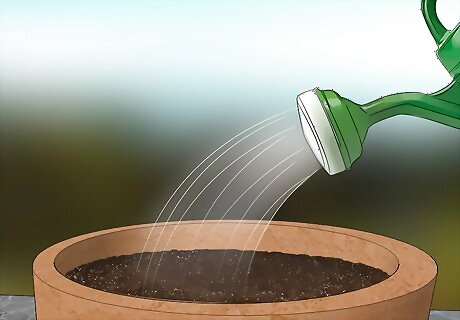
Water the seeds and fill in any excess soil. Use a watering can to gently pour water over your herbs until the soil is damp. If you notice the soil level go down after watering, add more soil so it’s level again. Put your finger in the soil up to the first knuckle. If the soil feels dry, keep watering the herbs.
Caring for Your Herbs
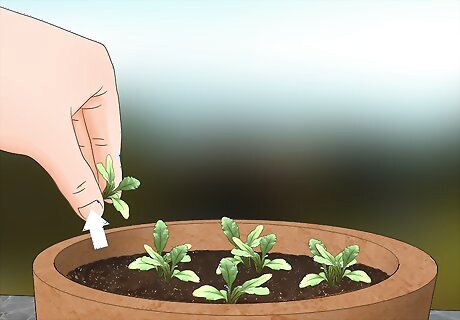
Thin out any weak seedlings with gardening scissors. Wait until your herbs have 1 or 2 sets of true leaves before thinning them out. Snip herb seedlings that look withered or leggy to reduce the crowding in your pot. Don’t pull them up by hand or else you could damage the roots of your healthy plants. Thinning out seedlings helps reduce competition for water and nutrients.
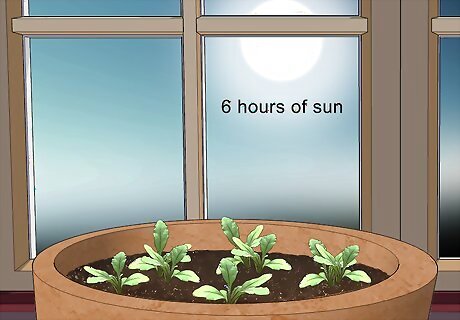
Keep the pot in an area with at least 6 hours of sunlight. Keep the herbs near a south-facing window indoors or outdoors if there is no risk of frost. Make sure the area gets full sun throughout the day. Keep the herbs near your kitchen so you can easily access them when you want to use fresh herbs.
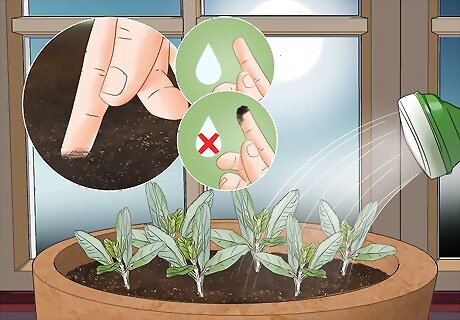
Water your herbs when the soil is dry 1–2 in (2.5–5.1 cm) deep. Stick one of your fingers into the soil until it’s up to the first knuckle. If the soil feels dry, use your watering can to gently pour water into the pot. Let the soil dry out between each time you water. Use distilled or untreated water if possible.
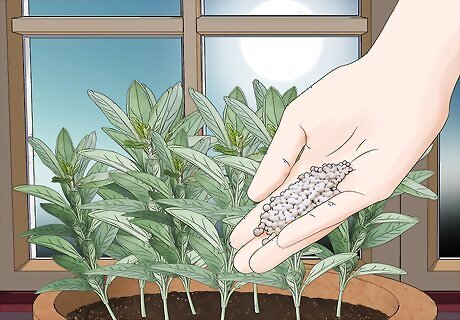
Use an organic fertilizer once a month to encourage healthy growth. Find a half-strength liquid formula to use on your herbs. If you’re growing herbs outdoors, apply the fertilizer when you water your herbs during the summer growing season. Pick a slow-release formula if you only want to apply the fertilizer once per year. Make sure the fertilizer is safe for vegetables or food if you want to cook with your herbs.
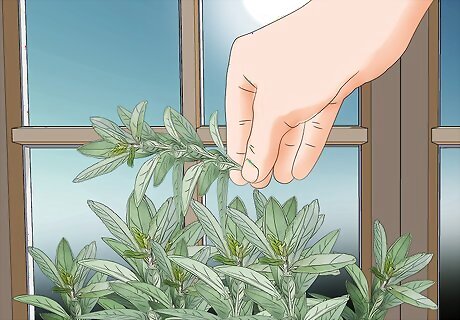
Pinch any weak or leggy stems to encourage bushier growth. Use your thumb and index finger to squeeze any stems that are broken or wilting. Otherwise, your herbs will use energy to keep these stems growing and affect your harvest. This encourages the other stems on your herbs to grow stronger.
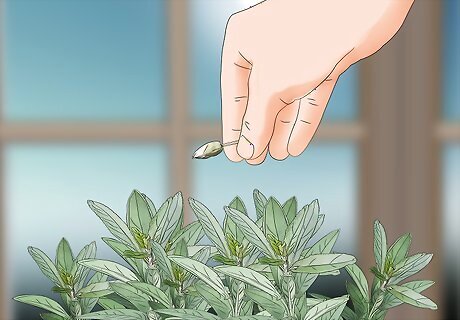
Cut flower buds off your herbs to extend the growing period. Flowering takes a lot of energy from your plant and will make the plant stop growing. Use a pair of garden scissors to cut them off or remove them by hand.
Harvesting Your Herbs
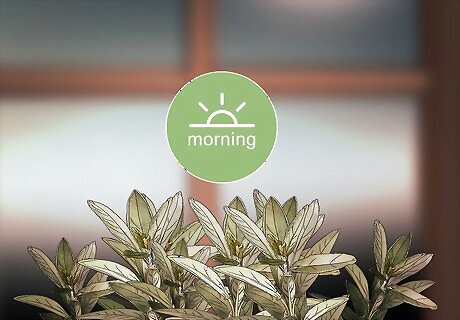
Collect your herbs in the morning. Your outdoor herbs are the freshest after the dew dries in the morning. Wake up early on the days you wish to harvest your herbs, though they will still be okay if you pick them throughout the day. Indoor herbs can be harvested at any time of the day.
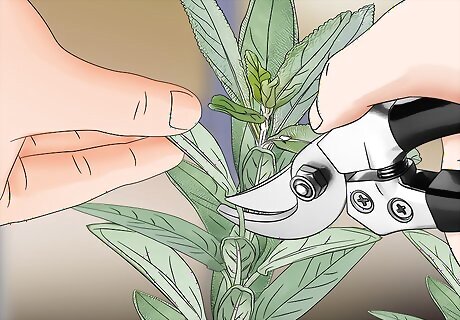
Cut or pull the leaves off of your herbs. Use gardening scissors or your hands to remove the leaves. If you’re growing stemmy herbs like rosemary, cut them near the base of the plant. Remove leaves at their nodes so more can grow throughout the season. Gently pull if you’re removing the leaves by hand so you don’t damage the plant. Take only as much as you need for your recipe. Herbs will go bad after a few days.
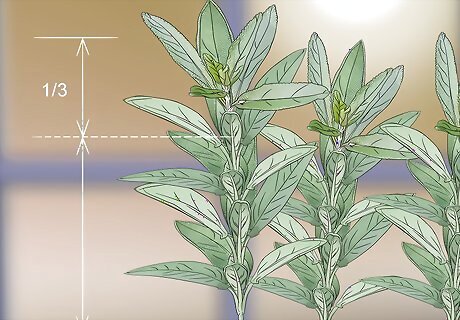
Harvest only one-third of the foliage at a time. Leave enough of the plant so it has a chance to regrow. You can harvest from the same herb multiple times throughout the growing season. Removing too much will make it more difficult for the plant to produce more leaves.
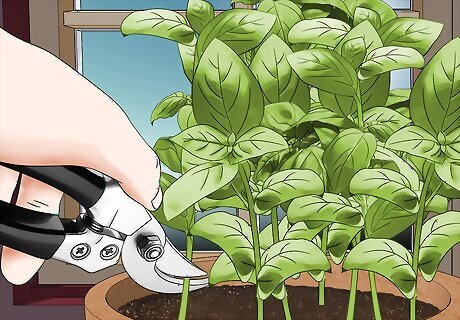
Harvest annual herbs before the first frost. Annuals, like basil, dill, or cilantro, only live for 1 year and will die in cold weather. After your last harvest, let the plant die out before removing it and throwing it away. Some annuals will self-seed, such as basil and dill, at the end of the summer and sprout again next year. Research the herbs you plant to see if this is a viable option. If the herbs are grown indoors, they can be grown and picked year-round.
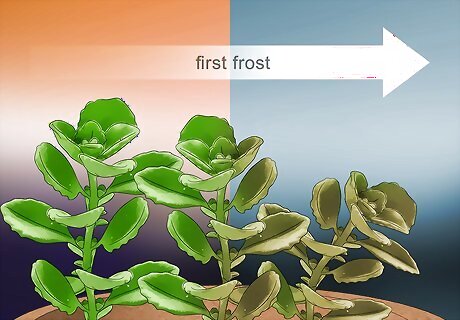
Let perennial herbs die out in the cold. Perennials, like fennel, mint, and oregano, can live 2 years or longer. Let the plants die in the cooler months if you keep them outdoors and watch them sprout back in the spring. Check the winter hardiness of the herbs compared to the climate you live in. If your herbs would not survive outdoors, bring them inside in the fall. Many herbs will continue to grow if they’re kept inside.














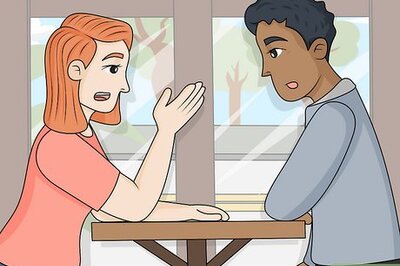





Comments
0 comment